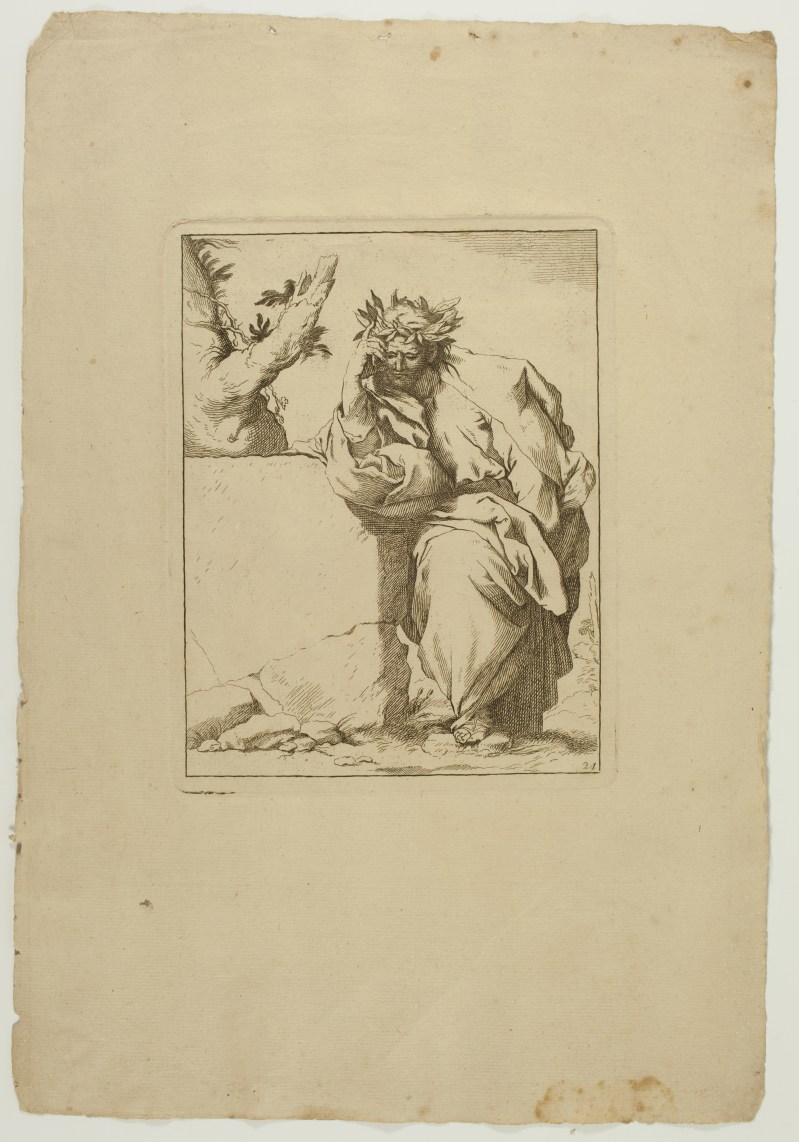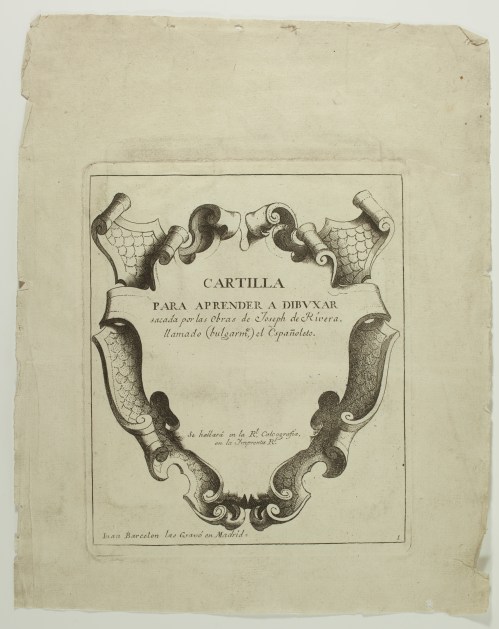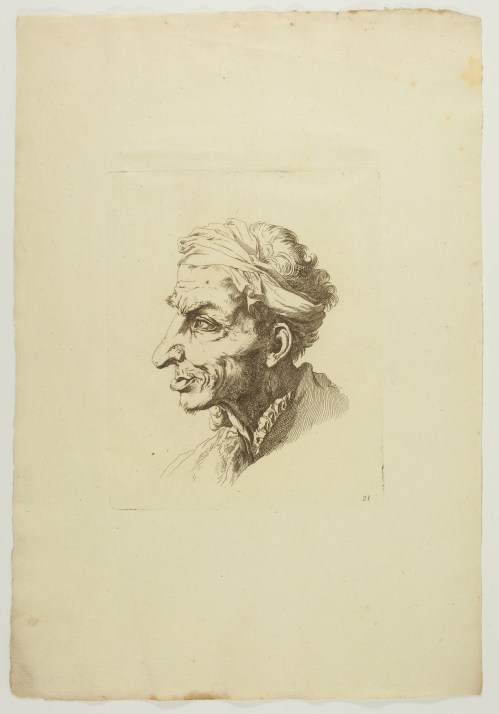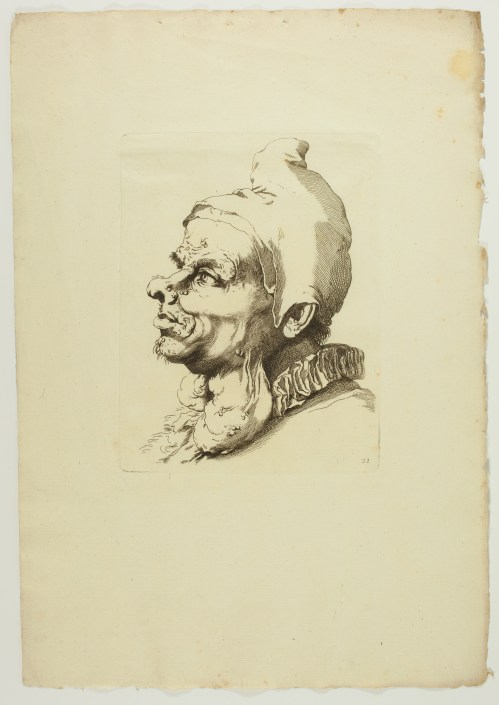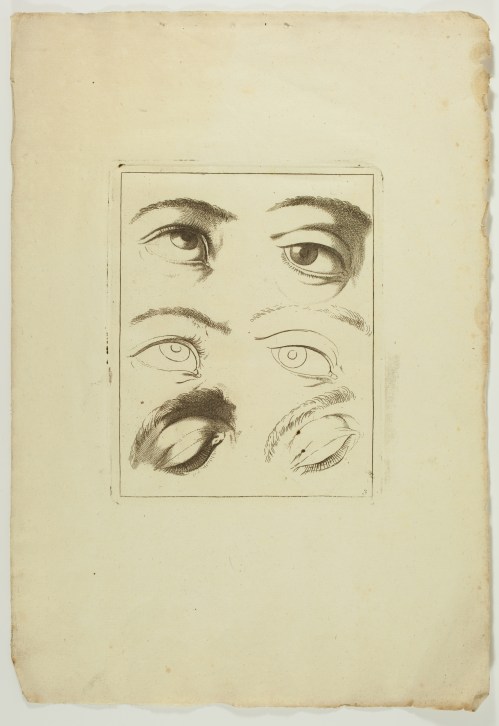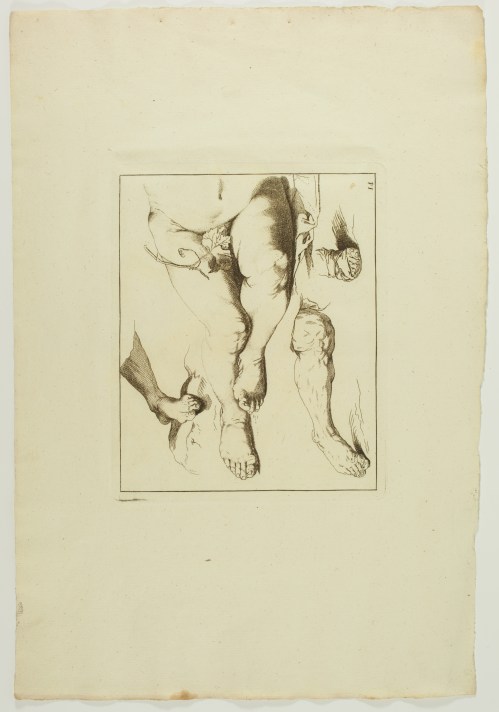Juan BARCELÓN (1739 - 1801) after Jusepe de RIBERA: Cartilla para aprender a dibuxar sacada por las Obras de Joseph de Rivera, llamado (bulgarm.te ) el Españoleto - 1772
Price: 3000€
[Notebook for learning to draw, taken from the works of Joseph de Rivera, known (commonly) as el Españoleto].
Extremely rare series of twenty-four numbered plates (one frontispiece and twenty-three prints).
Etching and engraving, 180 x 150 mm (frontispiece) and 155 to 165 x 122 to 131 mm (plates 2 to 24). El maestro de papel catalog no. 32.
Title plate: margin a little trimmed at bottom, the sheet along the upper and right platemark partially broken and consolidated on verso. Other plates: a few small tears at leaf edges, a few small creases, rare marginal stains; three leaflet holes in top leaf margin.
Fine impressions printed on watermarked laid paper (interlaced letters).
This Notebook is a copy of the second edition of the Livre de portraiture recueilly des œuvres de Joseph de Rivera dit l'Espagnolet, published by Louis Elle, known as Louis Ferdinand, in Paris in 1650 (El maestro de papel catalog no. 26) and now very rare. Ferdinand's collection introduced Ribera to the world as an aquafortist. José Manuel Martilla explains that, at the time, Ribera was not yet considered a great painter, as he was seen as a follower of Caravaggio. A century later, "in the years in which Barcelón published the Cahier, the recognition and historiographical construction of the Spanish school of painting with Velázquez, Murillo and Ribera at its head had begun to take shape, and this project to disseminate the etched works of the Xàtiva artist can therefore be resituated in this context of national vindication." (El maestro de papel, p. 324, translated by us). The choice of copying a French model, explains Martilla, stems from the fact that Spanish students at the Académie were boarders in Paris, and French prints were regularly used as models.
After a cartouche-shaped frontispiece, numbered 1, inspired by Ribera's print of the Marquis de Tarifa's coat of arms, plates 2 to 17 feature studies of heads, eyes, noses and mouths, ears, legs and feet, arms and hands. The details of these studies are taken from well-known Ribera prints, such as his Drunken Silenus. Plates 18 to 24 reproduce larger parts of Ribera's prints, or even entire etchings: Plate 18 features a detail of the angel in the etching Saint Jerome Hearing the Trumpet of the Last Judgment; Plate 19 reproduces the angels in the etching of the Marquis of Tarifa's coat of arms; Plate 20 is a detail from The Martyrdom of Saint Bartholomew; Plate 21 reproduces the entire Small Grotesque Head, and Plate 22 the Large Grotesque Head; Plate 23 features a detail of Saint Peter in the print The Penance of Saint Peter; and the last plate reproduces The Poet in its entirety.
Reference: María Luisa Cuenca García, Ana Hernández Pugh, José Manuel Matilla: El maestro de papel: cartillas para aprender a dibujar de los siglos XVII al XIX, 2019.



